Written by Ashley McDonald, UF/IFAS NCBS Research Scientist
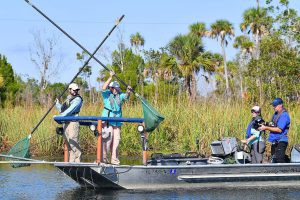
Project Summary
The Suwannee River system was targeted this past winter by biologists in electrofishing boats to study a new addition to the local fish community, the recently range-expanded Common Snook (Centropomus undecimalis).
NCBS Research Scientist Ashley McDonald and collaborators from the Fish and Wildlife Conservation Commission and the Suwannee River Water Management District (funding source), along with numerous undergraduate research volunteers and NCBS staff members, have used electrofishing to collect Snook.
These river Snook were then surgically implanted with acoustic tags that allow researchers to track their movements in the river and monitor their use of warm springs water emerging from the numerous springheads in the Suwannee system.
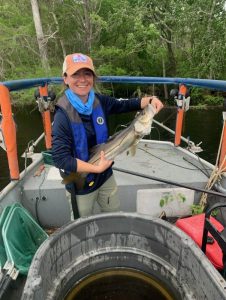
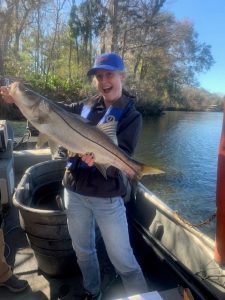
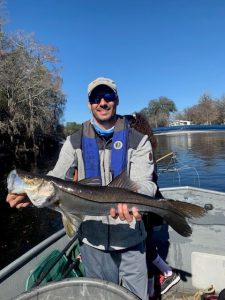
Wait, Snook in rivers?
Snook are mostly known as popular saltwater sportfish that were historically limited to a year-round residency in more tropical areas of South Florida. Snook are more tropically associated because they become cold-stressed at temperatures below ~54°F, yet dangerously low temperatures are often reached in the Gulf of Mexico during winter.
To avoid stressful temperatures, Snook make a winter migration into nearby rivers where the water temperature is usually warmer and more consistent during cold snaps. Recently, winters in the Gulf of Mexico have been less severe with cold snaps occurring far less often and at shorter durations when they do occur.
Mild winters over the past few decades have allowed Snook to expand the northward range limit ~90 miles to the Suwannee estuary, but these fish are more likely to be subjected to winter cold snaps than their South Florida conspecifics that also threaten the Suwannee river system they use as their winter refuge.
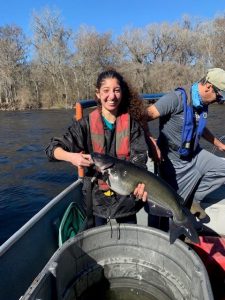
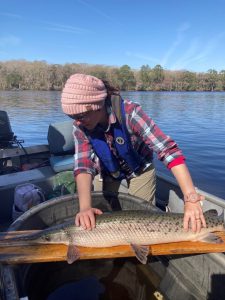
Springs to the rescue!
When a rare freeze event brings Suwannee River temperatures down below a Snook’s tolerance, sections of the river are thermally buffered by the consistent water temperatures of the numerous springs flowing into the river. Spring water has a near-constant temperature of ~70°F and the addition of this water into the cold river during a freeze event creates a thermal refuge for cold-intolerant Snook.
Of interest to researchers and stakeholders of the Suwannee River and its many associated springs is the ‘where’, ‘when’, and ‘how’ the Snook use these warmer water springs plumes. To answer these questions, we need to study the fine-scale movements of Snook around spring plumes in the Suwannee River and connect these movements with the temperature patterns of the river and spring plumes.
This research is essential to better understand how this fluid thermal refuge is influenced by river flow, air temperature, and (most importantly) springs flow to assist with assessments of spring flow rates required for a healthy ecosystem.
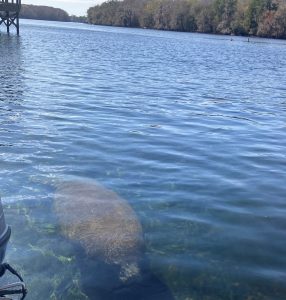
 0
0
